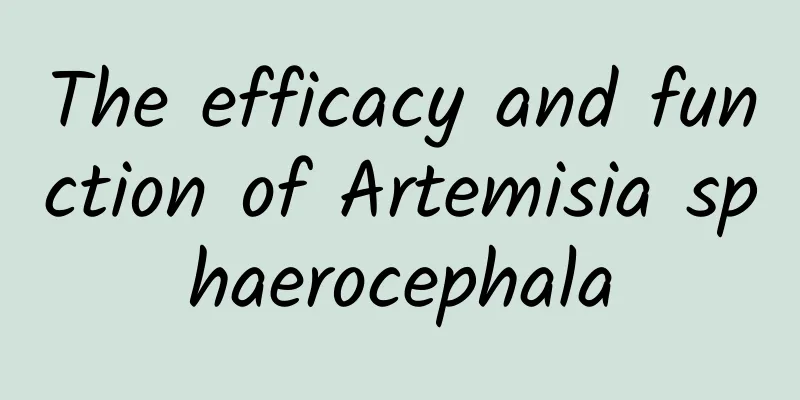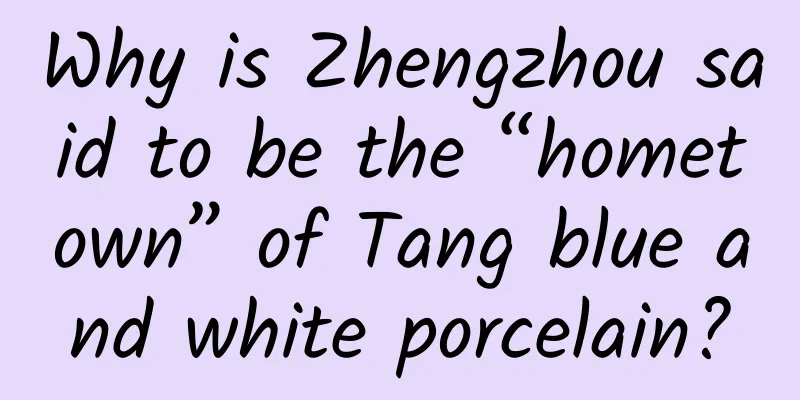The efficacy and function of Artemisia sphaerocephala

|
Traditional Chinese medicine often has unexpected effects in the treatment of certain diseases, so you can choose it with confidence. However, when choosing traditional Chinese medicine, you need to understand the medicine so that when treating the disease, you will know what kind of medicine is the best choice. Let us introduce the traditional Chinese medicine Artemisia sphaerocephala. 【English name】 Roundhead wormwood [Other names] Pulmon, Artemisia selengensis, Artemisia argyi, Artemisia oleifera 【Source】 Medicinal material source: seeds of Artemisia roundheada [Original form] A small round wormwood shrub, 80-150cm tall. The column root is thick and long, woody; the rhizome is thick, woody, and has nutrient branches. The stems are clustered, rarely single, gray-yellow or gray-white, smooth, with slightly obvious longitudinal ridges, many branches in the upper part, the branches are 15-30cm long, the workers are longer, smooth, gray-yellow or light purple-red, and often have short branches. Leaves are alternate; petioles are 3-8mm or longer, smooth, grayish yellow or lavender, and often have short branches. Leaves are alternate; petioles are 3-8mm long, often with linear stipules at the base; leaves are semi-fleshy; leaves on short branches are often densely clustered; leaves in the lower and middle parts of the stem are broadly ovate or ovate, 2-8cm long, 1.5-4cm wide, two or one to two times pinnate-lobed, with the middle lobes on both sides being the longest, often 3-lobed again, with lobule segments linear or slightly curved, nearly sickle-shaped, with a small hard tip at the tip, decurrent from the base, semi-amplexicaulous, with obviously curled edges; leaves on the upper part are pinnate-lobed or 3-lobed; bracts are undivided, linear, rarely 3-lobed. The inflorescence is spherical or nearly spherical, 3-4mm in diameter, with short stalks, drooping, with 3-4 layers of bracts arranged in spikes on the branched twigs, the outer bracts are pale yellow on the back, smooth, with a green mid-rib, the edges of the middle and inner bracts are broadly membranous or entirely semi-membranous; there are 4-12 female flowers, the corolla is narrowly tubular, with 2-lobed teeth on the eaves, and the style is 2-forked at the tip; there are 2-20 bisexual flowers, the corolla is narrowly tubular, with 2-lobed teeth on the eaves, and the style is 2-forked at the tip; there are 6-20 bisexual flowers, sterile, the corolla is tubular, with glandular dots on the outside, the anther tip has pointed appendages, long triangular, rounded base, short style, 2-lobed at the tip, not forked, and the degenerate ovary is small. After fruiting, the inflorescence and flowers are easy to fall off. Achenes are small, black, and have a gelatinous substance on the back. Flowering and fruiting period is from July to October. [Habitat distribution] Ecological environment: Growing in desert areas or sand dunes at an altitude of 1000-2850m and on arid wasteland. [Chemical composition] A colloid was isolated from the seeds of Artemisia sphaerocephala, which may be a polysaccharide with a cross-linked structure. It is composed of D-glucose, D-mannose, D-galactose, L-arabinose and xylose, among which D-glucose has the highest content, followed by D-mannose, D-galactose, L-arabinose and xylose [1]. It also contains ethyl linoleate, sakuranetin, isosakuranetin, acacetin, and arocarpanone[2]. It also contains volatile oils, the main components of which are cineol, α- and β-pinene, α- and γ-terpinene, etc. 【Nature and flavor】 Spicy; warm 【Functions and indications】Regulating Qi; relieving constipation; detoxifying. It is used for constipation, abdominal pain with fishy smell, rib inflammation, tonsillitis, carbuncle, sore and furuncle. [Usage and Dosage] For oral administration: grind into powder, 5-10g. For external use: take appropriate amount, grind into powder and apply on the affected area. [Discussions by various scholars] "Xinhua Compendium of Materia Medica": It has the functions of anti-inflammatory, dispersing blood stasis, regulating qi and killing insects. Used for abdominal distension (taken with white wine), and externally for mumps, tonsillitis, and redness and swelling of sores and boils. 【Excerpt】 Chinese Materia Medica The above is some introduction to the effects and functions of the traditional Chinese medicine Artemisia sphaerocephala. Artemisia sphaerocephala is of great help to human diseases, but it is worth noting that we should use symptomatic medication according to our personal physical condition and avoid indiscriminate consumption. |
<<: The efficacy and function of ramie
>>: The efficacy and function of white sandworm medicine
Recommend
What are the functions and effects of mulberry silkworm cocoons?
You may not have heard of mulberry silkworm cocoo...
The efficacy and function of sea cucumber
Do you know about Round-calyx Sea Cucumber? It is...
Eight papers from the International Primate Genome Project are published online! Chinese team reveals the mystery of primate evolution
As a member of the primate family, humans have al...
The efficacy and function of tree sweet potato root
Most Chinese medicinal materials have good effect...
Why do we put small stones in sugar-roasted chestnuts? Can bright chestnuts cause cancer? The truth is…
Expert of this article: Pa Lize, chief physician ...
After wading through water after rain, beware of these skin diseases
After heavy rain, prevent infectious diseases, es...
The efficacy and function of black face leaves
When it comes to black-faced leaves, we are all f...
The efficacy and function of poplar branches
Poplar branches are a relatively common medicinal...
What are the benefits of pangolin shells?
In fact, the pangolin shell is very effective. It...
What are the benefits of eating a chicken drumstick every day? Is it good for cardiovascular health and can it help you live longer?
Eat a delicious chicken leg! Who can resist the t...
With just a canoe, the coastal ancestors began to explore the sea!
Most coastal settlements in the Neolithic Age wer...
The efficacy and function of ground mulberry
The ground raspberry is a fruit with a very high ...
Astronauts of Shenzhou 13 are coming home soon! Why did they use the Dongfeng aircraft for the landing site this time?
"The landing site system will play an import...
The efficacy and function of rooster saliva
Traditional Chinese medicine is very helpful in t...









